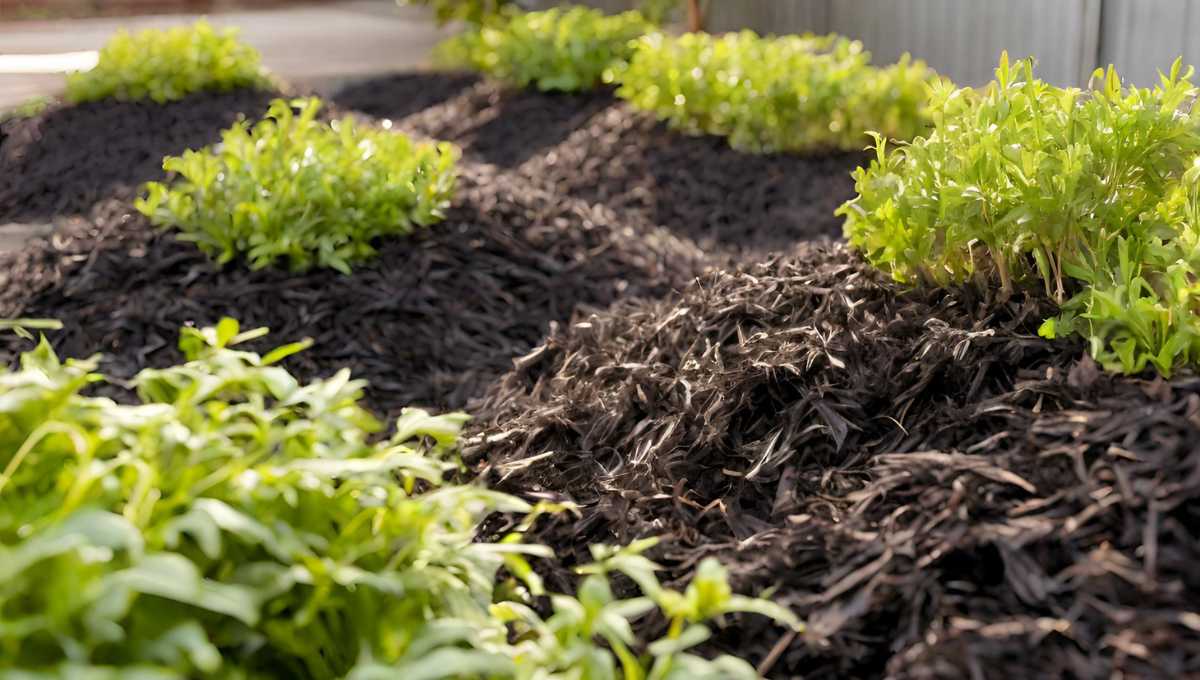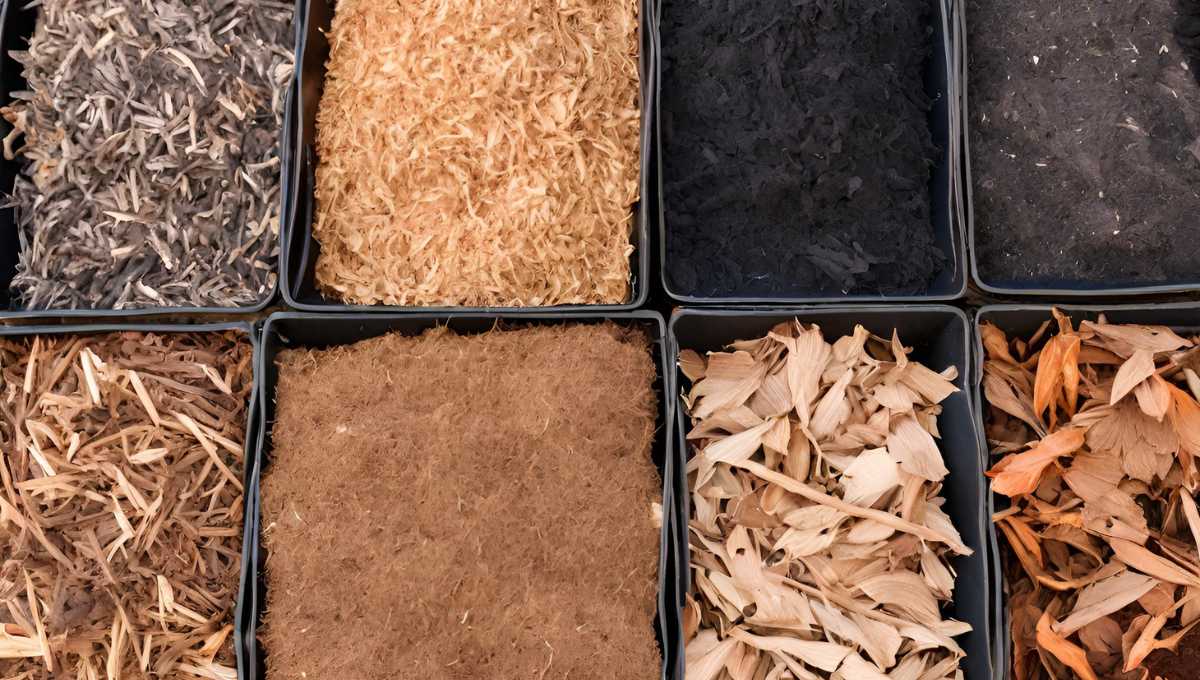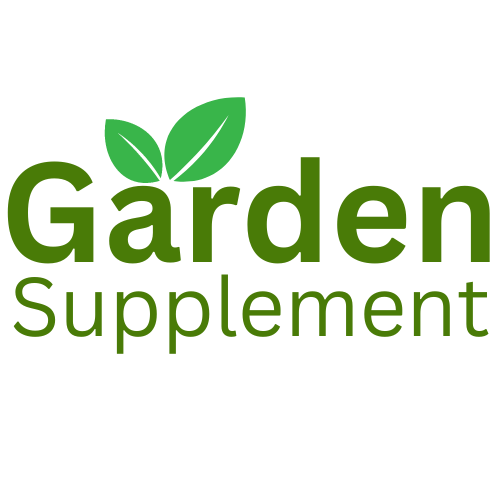
Mulch is your garden’s secret weapon, Todays we’re going to talk about the benefits Garden Mulching, all the different types of mulch, and at the end, I’m going to give you my best tips for how to use mulch in your garden. I’d love to share garden inspiration and helpful tips so you can be successful in your own garden.
Let’s talk about the benefits of Garden Mulching
Why should we add mulch to the garden? Well, in hot climates or in cold climates, mulch is your friend because it helps regulate soil temperature. Plants’ roots are happiest when they can stay at a consistent temperature, and adding mulch helps regulate the soil temperature. There are also have many more benefits of mulch. Let’s try to know about of them step by step.
Regulate the soil temperature
- Plants’ roots are happiest when they can stay at a consistent temperature, and adding mulch helps regulate the soil temperature. Thick mulch helps insulate it even more.
- Higher soil temperatures slow plants’ growth, and mulch moderates that temperature just a bit.
- Mulch shades the soil from the sun’s direct rays, causing less variation in the temperature of the soil during cooler temperatures. Mulch also helps to regulate the soil temperature
Its helps to retention of soil moisture
- Using mulch reduces the amount of water lost through evaporation from the soil.
- A thick layer of mulch reduces the amount of moisture lost through evaporation.
- You have to water less frequently, and this saves time, money, and that valuable resource of water.
It adds organic matter to the soil
- The next benefit of most mulches is that it adds organic matter to the soil.
- When you add natural mulch in the form of bark, straw, or compost, it incorporates into the soil, adding nutrients and organic matter.
- Adding mulch also means fewer weeds. Mulching blocks the sunlight needed for weeds to germinate and often smothers existing weeds.
- All of these benefits together mean that there are more good things going on in the soil.
- when you add mulch: increased moisture, less temperature fluctuations, more organic matter, all lead to more worm activity and more beneficial microorganisms in the soil, and that is a good thing.
- Healthy soil means healthy plants.

Now let’s talk about the different types of mulch, its advantages and sources.
There have many kinds of mulch. Let’s try to know about of them and its advantages step by step.
1. Compost mulch
- The first thing on my list is compost. Compost is one of my favorite ways to mulch the garden.
- You can use homemade compost, bagged compost, bulk compost; all of them make great mulch for your garden. Compost is high in nutrients and has a finer texture than a lot of the other options.
- Don’t use fresh animal manure; it must be aged if you’re going to use that type of compost.
- I like to make my own compost,
2. Another great option for mulch is composted mulch:
- Another great option for mulch is composted mulch. It’s a little bit confusing about what’s the difference between compost and composted mulch.
- Composted mulch is made from landscape waste, typically, and it hasn’t been composted down all the way.
- Again, it’s going to have a little bit larger texture than typical compost.
- If you use the composted mulch as compost in your garden, it will still heat up because it isn’t completely finished breaking down, but it makes an excellent mulch for the tops of your garden beds.
- . I also love the bagged composted mulch from a local nursery; it works great as well.
3. Another option for Garden Mulching is pine needles:
- Another option for mulch is pine needles. If you have pine trees, you have pine needles, and they’re a readily available option for people with pine trees.
- Pine needles are light and airy and easy to spread. They don’t get compacted like some other things can.
- You’ll need a thick layer of three to four inches if you’re using pine needles.
- Just be aware that pine needles can lower the pH of soil if they get worked into that soil.
- That may not be a bad thing here in the low desert where our soils tend to be more on the alkaline side. Pine needles do become more pH neutral as they break down.
4. Another great option for Plant Bed Mulching is straw:
- Another great option for mulch is straw. Straw is the stock that is left over after a grain like barley has been harvested. Look for pesticide-free straw and add a several-inch-thick layer of straw to your garden beds.
- Leaves or shredded leaves are also a great option for mulch.
- Sometimes you hear that referred to as leaf mold. Leaf mold simply means that the leaves have begun to break down.
- Making leaf mold is simple; you simply bag up your leaves in a black garbage bag, let them sit for a little bit, they will begin to mold and break down, and you can add this as mulch to your beds.
- Another option for using leaves is to run over the leaves with your lawnmower, and this can shred the leaves. Shredded leaves are a great option for mulching your garden.
- When you use shredded leaves as mulch in your garden, they are less likely to get matted compared to whole leaves, which can sometimes become matted.
5. Bark or wood chips are another great option for Garden Mulching:
- These have a larger texture; you can often get them for free from places like Chip Drop or contact a local tree trimmer or an arborist.
- If you use wood chips or bark in your garden bed, they may compete a little bit for nitrogen as they break down.
6. Another option for Soil Insulation is to use chopped-up cover crops or grass clippings:
- Chop them up and let them dry in the sun for a day or two before you add them as mulch on your beds.
- Do not use grass clippings from a lawn treated with chemicals as mulch in your garden beds.
7. Another option for Plant Bed Protection is cardboard or even newspaper:
- Cardboard is often used as sheet mulch under beds in pathways; it can help prevent weeds and things like bermuda grass.
- You can also use newspaper as mulch in your beds. Spread the newspaper in your beds but cover it with another type of mulch to keep that newspaper in place.
Let’s talk about which types of mulch to use in the different locations of your garden.
- For raised beds, you can use any of the types we’ve talked about, but typically some of the finer options are going to be a better option for raised beds.
- Compost, composted mulch, and wood chips are my three favorite options for mulching raised beds, but all of the options we’ve talked about can be used in your raised garden beds.
- . What about in your pathways? In your pathways, it’s best to use a larger type of mulch. This would be a place where wood chips and wood bark are excellent; they take longer to break down.
- You can also use inorganic materials like pea gravel and rocks between your beds too.
- Here in the low desert, using an organic type of mulch in between my beds keeps the heat down just a little bit; those rocks absorb the heat during the day
See you again, with another new topic for your garden improvement. No more today, but don’t forget comment us about your gardening experience in comment box. Of course join our NEWSLETTER program to get all updates and information gardening tips in your email box. Thanks for stay with us.

